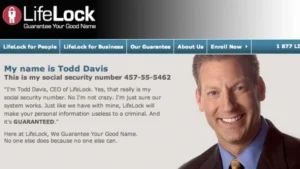Do you remember the “Think Different” Apple Computer ads from 1984? The one where the woman throws the hammer at the screen while an audience of zombie-like users are blown away. (Here is a YouTube if you missed it.) There is a reason this ad was effective. It not only asked the viewer to think different, the ad itself was different. Wildly different.
In the early 1980s, computers and their ads were dull, beige experiences populated with dorks in sweater vests. Apple presented a stark contrast between their vision for computers and that of the computer titans of the time (namely IBM). In a single ad, with a single message (“Think Different”) Apple changed the entire computer market.
Of course, Apple would go on to fire their founder and almost destroy the company, but that is a different story with a different leadership lesson.
However, in 1984 Apple innately understood an important rule of running a startup: do not play your competitor’s game, make them play your game.
Nobody Gets Fired for Buying IBM
When you run a startup, you are always at a disadvantage. Startups lack the people, money, time, and name recognition that larger, wealthier companies have. Large companies will always use their dominant position to squash smaller startups. Any competition with larger, entrenched players is inherently unbalanced and unfair.
Moreover, buyers are also biased to select products and services from larger companies. Smaller startups are riskier, for the same reason stated above, limited resources. In the early 1980s, IBM dominated the computer business. Customers believed it was safer to buy from IBM. Thus their largeness only helped them to become larger, and therefore overshadow any competitor.
Apple was a small(ish) computer company at that time. They had a respectable reputation among computer nerds. Their products were more advanced than IBM and the various PC clones, but they were also more expensive. IBM owned the market. Apple was playing a game that only IBM could win.
Enter the 1984 ad. Suddenly, Apple is the coolest thing around. Everybody wants one. Where other computer companies struggled, Apple saw an opportunity. There was an untapped potential that IBM was not addressing. Computer buyers wanted to be special, unique, and … different.
Apple’s ad provided the market an exceptionally clear choice: we are cool, they are not. Contrast is supremely appealing to buyers. When the choices between options are clear, buyers can associate their identity to the product. Buyers are not merely computer owners, they become Apple computer owners, which is different, special, and unique.
Apple changed the game. Incidentally, Apple did the same thing in 2007 with the iPhone. Which is why the rectangle in your hand looks the way it does.
The lesson here for startup sales and marketing teams is this: do not do what everybody else is doing. That is a surefire way to disappear into the noise of a marketplace. You must stand out from the crowd. Even a poorly organized marketing effort that is unique and attracts attention is better than a well-crafted one that is the same as everybody else. Be different. Intentionally different.
So, how do you do this?
Cultivating Creativity
For starters, you need creative people and an environment that inspires them. That is easier said than done. Creative people are unpredictable, weird, and sometimes terrifying (just hang around any art school for a few minutes, if you need this point proven.) Anything that is truly unique is inherently scary, because it has no predecessor to prove it works. This makes it easy for critics to dismiss creative ideas as stupid, dangerous, or destined to fail.
Creativity can be uncomfortable. Investors, particularly the kind that are convinced they know everything, may aggressively challenge creative messages. Some investors have this malformed methodology where they invest millions of dollars into a disruptive, creative company, only to then squash all disruptive and creative ideas. They suffocate their own investments.
Likewise, employees may freak out when presented creative messages. This is also a fear reaction. When people achieve a level of comfort in a job, they will fight hard to maintain that comfort. This means rejecting anything that threatens to disrupt that comfort, like a strange, new idea.
As a leader (founder) you must not only sell your creative ideas to customers, but also reassure the people around you (employees, investors, partners, etc.) that it will work. You will not know if it works until it does (or does not.) When people ask for data or proof that your crazy idea will work, you can only point to other instances, such as Apples 1984 advertisement, where a disruptive, creative idea did work.
Unfortunately, not all disruptive, creative ideas work. The history of marketing is littered with creative ideas that cratered soon after launch. One that pops into my mind was the LifeLock ads from 2007 where the CEO dared people to steal his identity. It was definitely different. It also laid down a challenge for hackers to prove him wrong, which they did…quickly.

Creative Guardrails
So how do you cultivate a creative space without falling into a creative crater? Guardrails. Lifelock’s idea failed because it compelled people to do something wrong. The Lifelock team needed some basic guardrails around their messaging.
This is a funny contradiction about innovation and creativity: to encourage innovation you need to be open minded, but not so open minded you do something insane. Guardrails place reasonable constraints around messaging to ensure it stays in a productive and practical space.
What do these guardrails look like? They are unique for each company, however here are some generic ones you can consider:
Example Guardrails
- Do not ask the audience to do anything illegal, immoral, unethical, or disgusting. Lifelock needed to follow this guardrail.
- Do not associate your product with something repulsive, cruel, or oppressive. Apple’s ad did the exact opposite. It associated their product with freedom, beauty, and self-expression.
- Avoid the taboo topics: sexuality, religion, politics. These topics are too emotionally charged to be wielded effectively these days.
- Do not insult people’s characteristics. It is not funny or clever to insult immigrants, disabled people, or redheads for example.
- Do not trivialize things that cause(ed) people pain, suffering, or misery. For example, slavery is never funny. Do not ever use it, no matter how cute or sensitive you think you are.
- Tantalize, do not arouse. You do not want your audience feeling uncomfortable, embarrassed, or awkward. You want them to be curious, inspired, and/or excited.
- Do not use copyrighted content. You can hint at it. The best way to do this is to use similar words or designs.
Guardrails only can go so far. And every time you create one, you may find yourself quickly breaking it. The goal of any disruptive message is to want to make people know more about you. Whatever images, phrases, or concepts you have, they should all leave your audience asking: “I want to know more about them, they look interesting.”
Conclusion
Thinking differently is vital if you want to stand out from the crowd. Whatever your competitors are doing, you must be intentionally and overtly different than them. Otherwise, there is nothing special about you and therefore no reason to select you over a more well-established brand.











One Response
Yes, love this. Your stuff is always enjoyable to read. Keep up the great work, Andrew.